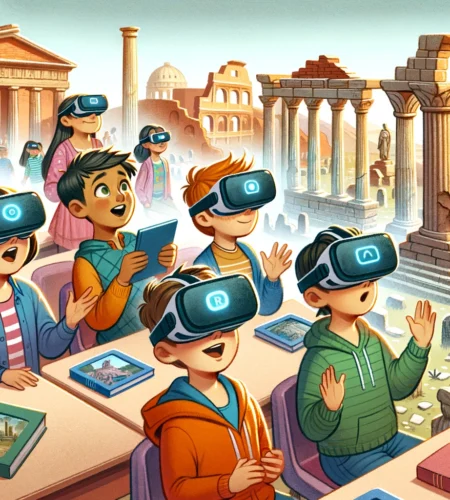What is Gamification in Teaching?
In an era where digital natives fill our classrooms, traditional teaching methods face the challenge of keeping students engaged and motivated. Enter gamification, a dynamic approach that infuses the captivating elements of game design into educational settings.
This innovative strategy is not just about playing games; it’s a sophisticated method of enhancing learning experiences by applying the motivational techniques found in games. Gamification in education leverages elements like points, levels, challenges, and rewards to foster a stimulating and interactive learning environment. It bridges the gap between digital game-worlds and educational content, making learning not just effective but also enjoyable. As we delve deeper into this transformative approach, we invite educators and learners alike to explore the potential of gamification in redefining the educational landscape.
Section 1: Understanding Gamification in Education

Gamification Defined in Education Gamification in teaching involves integrating game design elements into educational environments to enhance learning. It’s not about turning classes into games but using game-like elements such as scoring systems, levels, and achievements to create an engaging learning experience. This approach aims to make education more interactive, rewarding, and motivating, tapping into the natural human desire for gameplay.
Psychological Aspects: Motivation, Engagement, and Rewards The psychology behind gamification lies in its ability to boost motivation and engagement among students. By incorporating elements like points, badges, and leaderboards, gamification taps into intrinsic and extrinsic motivation factors. It fosters a sense of accomplishment and progress, which is crucial for sustained engagement. The reward system in gamification isn’t just about tangible prizes; it’s more about providing immediate feedback and recognition, which are powerful motivators in learning.
Section 2: The CX and UX of Learning Through Games
Applying CX and UX Principles in Educational Gamification Customer Experience (CX) and User Experience (UX) principles play a crucial role in designing effective educational games. These principles focus on understanding the users’ (students’) needs and preferences to create a more engaging and satisfying learning experience. It involves designing games that are not only educational but also enjoyable and easy to use, ensuring that they meet the learners’ expectations and preferences.
Importance of User-Centered Design in Educational Games User-centered design is key in creating successful educational games. It involves actively involving students in the design process, understanding their learning styles, preferences, and challenges. This approach ensures that the games are tailored to meet the educational goals effectively while being appealing and accessible to the students. By focusing on the user’s experience, educational games can become powerful tools for learning, providing an immersive and interactive platform that enhances the overall educational experience.
Section 3: Lessons from Board Game Design
Insights from Board Game Design Board game design offers valuable lessons for educational gamification. A key insight is the importance of narrative and thematic elements, which can make learning content more relatable and engaging. Additionally, the mechanics of board games, like strategic thinking, problem-solving, and decision-making, can be integrated into educational activities, promoting higher-order thinking skills.
Balancing Fun and Educational Value The balance between fun and education is crucial. While games should be enjoyable, their primary goal in an educational context is to facilitate learning. This balance is achieved by ensuring that the game mechanics and narratives are closely aligned with the learning objectives. The fun elements should not overshadow the educational content but rather complement and reinforce it.
Section 4: Strategies and Tools for Gamifying Education
Strategies for Implementing Gamification
- Progression Mechanics: Implement levels or stages that students can progress through.
- Reward Systems: Use points, badges, and certificates to recognize achievements.
- Collaborative Challenges: Encourage teamwork through group quests or challenges.
Popular Tools and Platforms
- Kahoot!: Interactive quizzes for real-time learning assessment.
- Classcraft: An RPG-style platform that transforms classroom dynamics.
- Duolingo: Language learning with game-like lessons.
Section 5: Real-World Examples and Case Studies
Example 1: Gamified Language Learning In a middle school, a foreign language teacher implemented a gamified system for Spanish lessons. Students earned points for completing interactive exercises, participated in weekly challenges, and unlocked levels as they improved. This approach led to a noticeable increase in student participation and language proficiency.
Example 2: Math Quest in High School A high school math teacher introduced a quest-based learning system. Each math concept was a ‘mission,’ with students working in teams to solve problems and ‘unlock’ the next topic. This approach resulted in improved test scores and student engagement.
Analysis of Success Factors The success of these implementations lies in their ability to make learning interactive, contextually relevant, and rewarding. By aligning game mechanics with educational goals, these but these examples demonstrate how gamification can create immersive and effective learning experiences.
Section 6: Challenges and Considerations
Challenges in Implementing Gamification
- Balancing fun and learning without compromising educational integrity.
- Ensuring equitable participation and avoiding over-competition.
- Integrating gamification with existing curricula.
Solutions and Best Practices
- Align game mechanics closely with learning objectives.
- Use gamification as a supplement, not a replacement for traditional teaching methods.
- Regularly gather student feedback to adjust and improve the gamified system.
Conclusion
Gamification in teaching offers a dynamic way to enhance learning experiences, making them more engaging, interactive, and effective. It’s not just about playing games; it’s about leveraging the motivational aspects of game design to enrich educational content. Educators are encouraged to experiment with gamification, adapting it to their unique teaching styles and student needs, to unlock the full potential of this innovative teaching approach.
Future Trends and Potential Developments in Gamified Education
The future of gamified education is poised for exciting developments. Emerging technologies like augmented reality (AR) and virtual reality (VR) are expected to create more immersive educational experiences, making learning more interactive and lifelike. Artificial Intelligence (AI) will personalize learning paths based on individual student performance and preferences, enhancing the effectiveness of educational games.

Additionally, the integration of social elements, such as global leaderboards and collaborative challenges, will encourage global interaction and learning. The focus will increasingly shift towards creating inclusive and accessible gamified learning tools, ensuring that students from diverse backgrounds can benefit.
As these technologies evolve, the potential of gamified education to transform the learning landscape is immense, promising a future where education is not just informative but also incredibly engaging and tailored to individual needs.
Examples of Future Trends in Gamified Education
- Augmented Reality (AR) Scavenger Hunts: Imagine geography lessons where students use AR to explore virtual landscapes, identifying landmarks and ecosystems in an interactive scavenger hunt.
- Virtual Reality (VR) Historical Simulations: History classes could use VR to transport students to different eras, allowing them to experience historical events first-hand, fostering a deeper understanding and connection with the subject.
- AI-Powered Personalized Learning Games: These games would adapt to individual student’s learning styles and pace, offering personalized challenges and feedback, making learning more efficient and tailored.
- Global Learning Challenges: Leveraging online platforms, students from around the world could participate in global challenges on subjects like environmental science or global history, promoting cross-cultural collaboration and learning.
- Inclusive and Accessible Game Designs: Games designed with inclusivity in mind, ensuring students with different abilities and learning needs can engage effectively, thus democratizing the learning experience.
These examples illustrate the potential of technology to revolutionize gamified education, making it more immersive, personalized, and globally connected.
Estimated reading time: 7 minutes
Subscribe to our email newsletter to get the latest posts delivered right to your email.



Comments